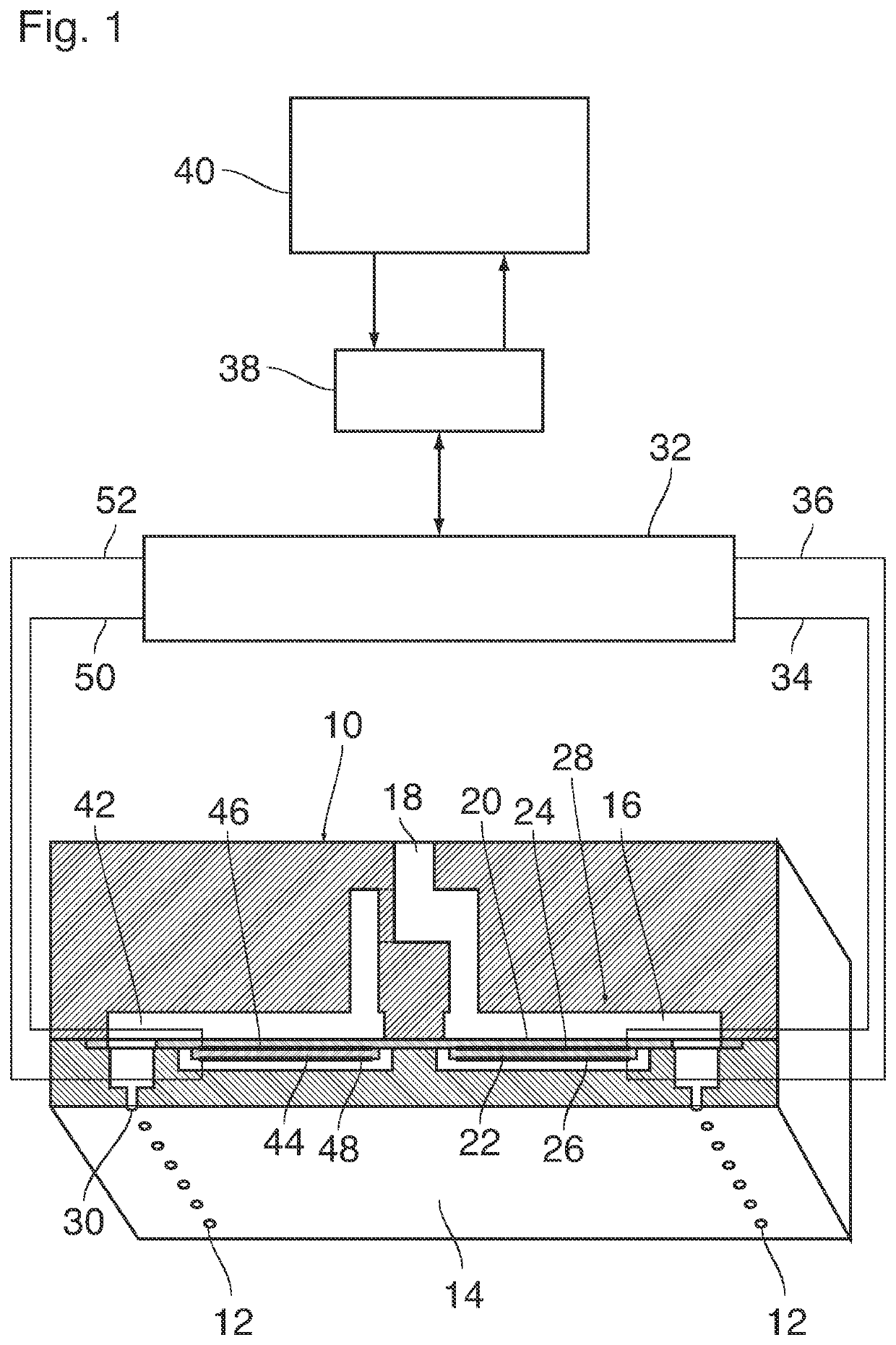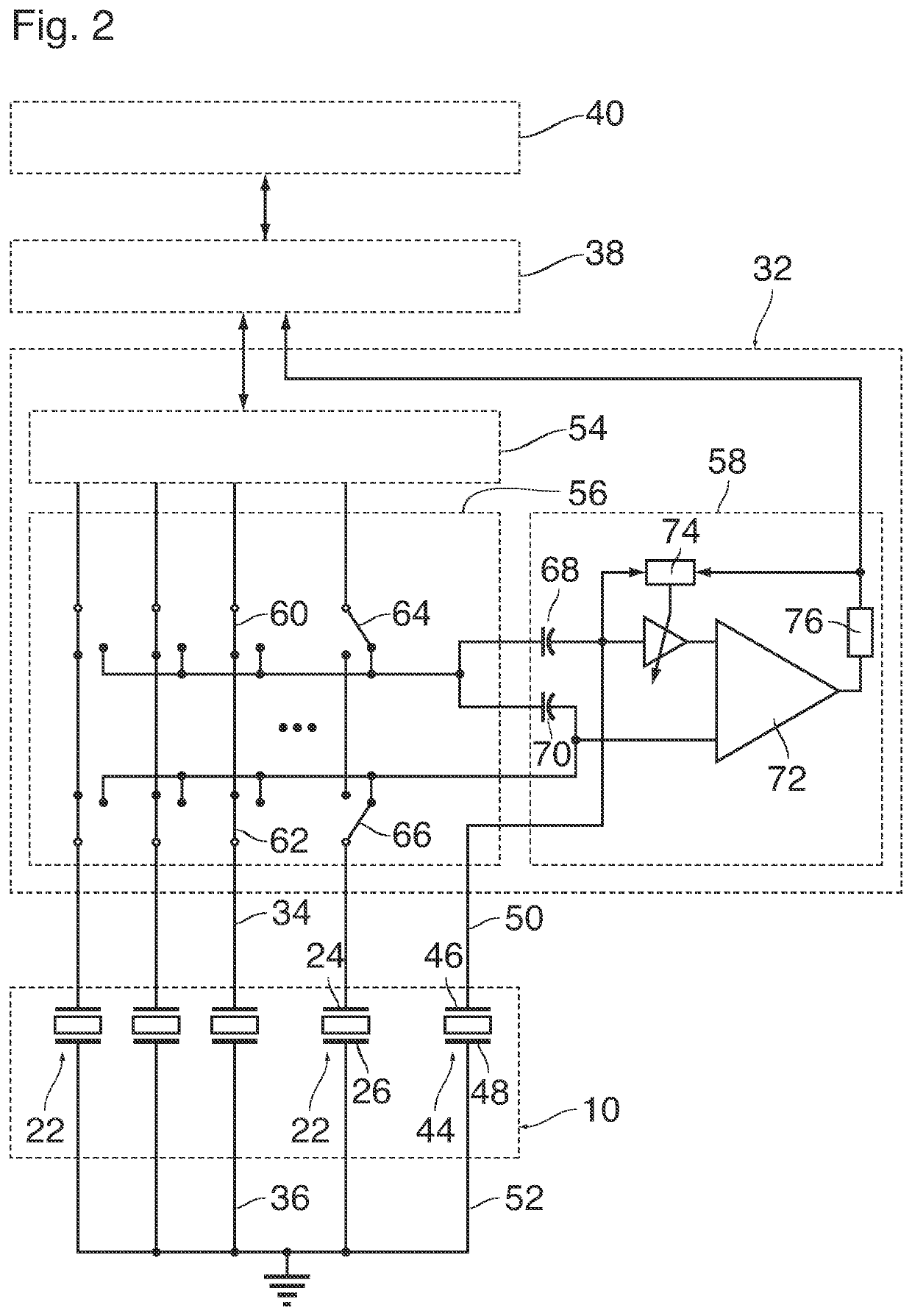Droplet ejecting device
a technology of ejection device and droplet, which is applied in the field of droplet ejection device, can solve the problems of insufficient cancelling capacity of fixed reference capacitor and inability to suppress actuation pulses by subtraction, and achieve the effect of accurate analysis of ejection unit status, easy to transcend detection signals, and insufficient capacitance of electromechanical transducers
- Summary
- Abstract
- Description
- Claims
- Application Information
AI Technical Summary
Benefits of technology
Problems solved by technology
Method used
Image
Examples
Embodiment Construction
[0018]As is shown in FIG. 1, a droplet ejection device which may for example form part of an ink jet printer comprises a nozzle head 10 with plurality of nozzles 12 formed in a flat nozzle face 14. The nozzle head 10 may for example be formed by MEMS technology (Micro Electro Mechanical System).
[0019]Each nozzle 12 is connected to one end of a duct 16 that is filled with liquid ink. An opposite end of the duct 16 is connected to an ink supply line 18 that is common to all the nozzles 12 and ducts 16 of the entire nozzle head. One wall of each duct 16 is formed by a flexible membrane 20 to which an electromechanical transducer 22 is attached on the side outside of the duct 16. The transducer 22 has a number of electrodes 24 only two of which have been shown here. The transducer 22 may be a piezoelectric transducer with a plurality of layers of piezoelectric material stacked one upon the other and with internal electrodes intervening therebetween. The internal electrodes inside the pi...
PUM
 Login to View More
Login to View More Abstract
Description
Claims
Application Information
 Login to View More
Login to View More - R&D
- Intellectual Property
- Life Sciences
- Materials
- Tech Scout
- Unparalleled Data Quality
- Higher Quality Content
- 60% Fewer Hallucinations
Browse by: Latest US Patents, China's latest patents, Technical Efficacy Thesaurus, Application Domain, Technology Topic, Popular Technical Reports.
© 2025 PatSnap. All rights reserved.Legal|Privacy policy|Modern Slavery Act Transparency Statement|Sitemap|About US| Contact US: help@patsnap.com


